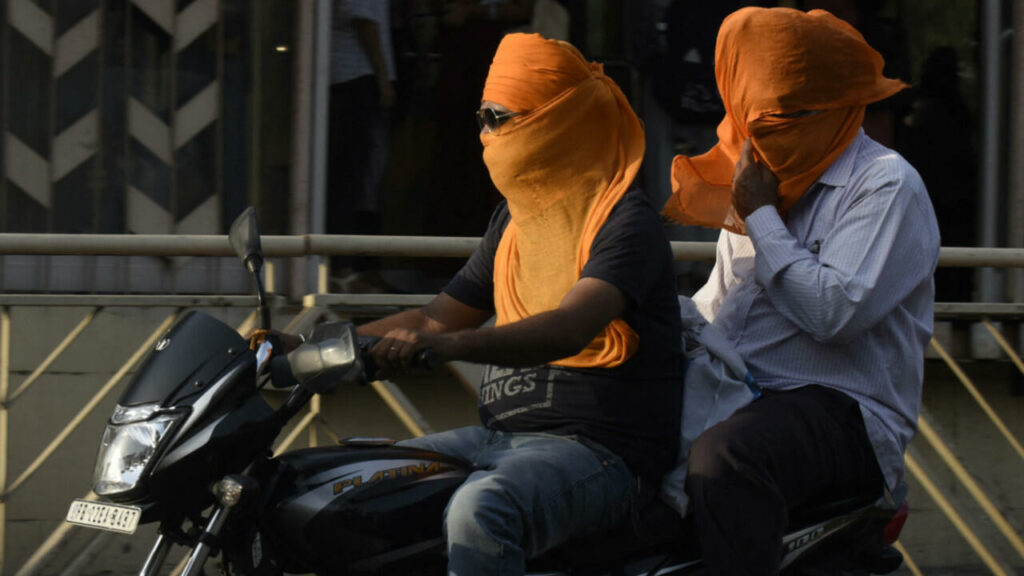Published on :
An unusual heat wave has hit India and Pakistan for two months. On Friday, the heat and humidity exceeded the human survival threshold when outdoors.
South Asia was once again faced with abnormally high temperatures on Friday, May 13, which in some places in Pakistan reached 50 ° C, the authorities warning of the risk of water shortages and the threat weighing about health.
Large swaths of India and Pakistan have been experiencing a record heat wave since late April, which the United Nations World Meteorological Organization (WMO) has deemed to be « consistent » with climate change.
Temperatures soared to 50°C in Jacobabad, in Pakistan’s southern province of Sindh, on Friday, the Pakistan Meteorological Service (PMD) said, adding that it could remain so until the end of the week.
« It’s like a fire burning all around, » said Shafi Mohammad, a farm worker from a village near Jacobabad, where people struggle to find drinking water.
At the national level, the temperatures are between 6 and 9 ° C « above the normal (seasonal) », underlined the PMD, the thermometer showing Friday around 40 ° C in the capital Islamabad and the other major cities of Karachi (south), Lahore (east) and Peshawar (northwest).
The situation is expected to get worse
« This year, we went straight from winter to summer, » said PMD chief forecaster Zaheer Ahmad Babar.
Pakistan, he said, has been hit since 2015 by rising temperatures, particularly in the provinces of Sindh and Punjab (center).
« The intensity, duration and frequency (of these heat waves) are increasing, » he told AFP.
The situation is expected to worsen further in coming years in South Asia due to global warming, scientists have warned.
The flow of the Indus has been reduced by 65 percent this year « due to lack of rain and snow », according to the spokesman for the Punjab Irrigation Department, Adnan Hassan.
Taking its source in Tibet, this river crosses India then Pakistan before flowing into the Arabian Sea. Its basin provides 90% of Pakistan’s water supply, according to the UN.
The Pakistani press reported that sheep had died of sunstroke and dehydration in the Cholistan desert in Punjab, the most populous province and the breadbasket of Pakistan.
« There is a real risk of shortage of food and crops this year in the country, if this lack of water is to persist, » said Adnan Hassan.
« Like an Oven »
The heat wave has also hit neighboring India, with temperatures reaching 48.1°C on Thursday in the Barmer district of Rajasthan province. They could rise to 46 ° C from Sunday in New Delhi.
« It was so hot today that I felt exhausted and sick when I came home from university by bus. The bus was like an oven, » said Suman Kumari, a 19-year-old student living in the Indian capital. .
Very high temperatures are also announced for the weekend in most of northwestern India, before an expected improvement with the arrival of the monsoon.
On Tuesday, Pakistan’s Climate Change Minister Sherry Rehman called on Lahore residents to stay in the shade « during the hottest hours of the day ».
Pakistan, which has 220 million inhabitants, says it is only responsible for 1% of global greenhouse gas emissions.
It is however in 8and position of the countries most at risk from extreme weather events, according to a study by the NGO Germanwatch.
With AFP
.

